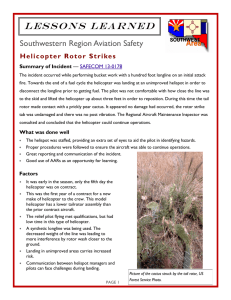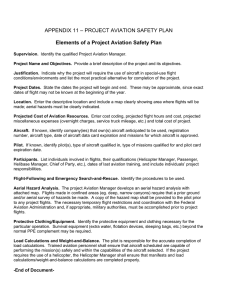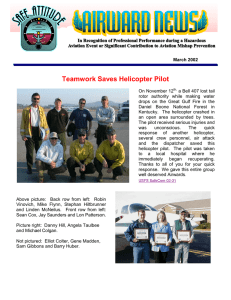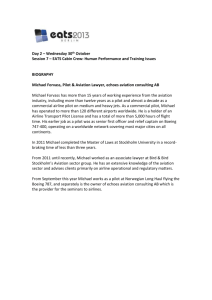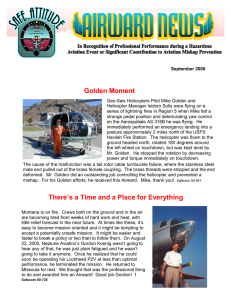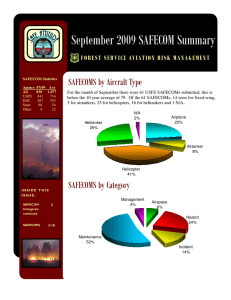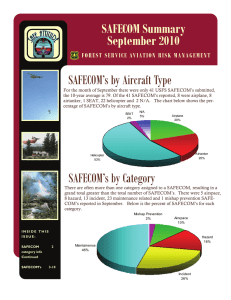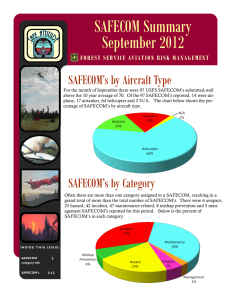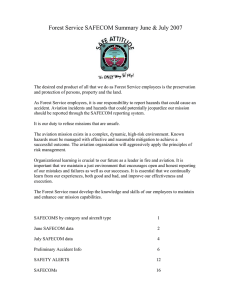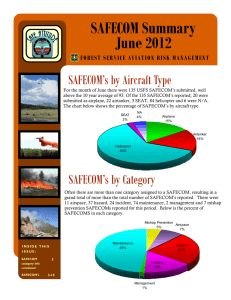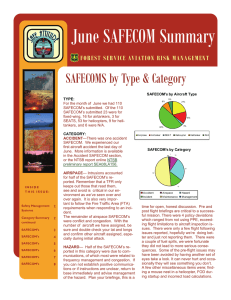March 2001
advertisement
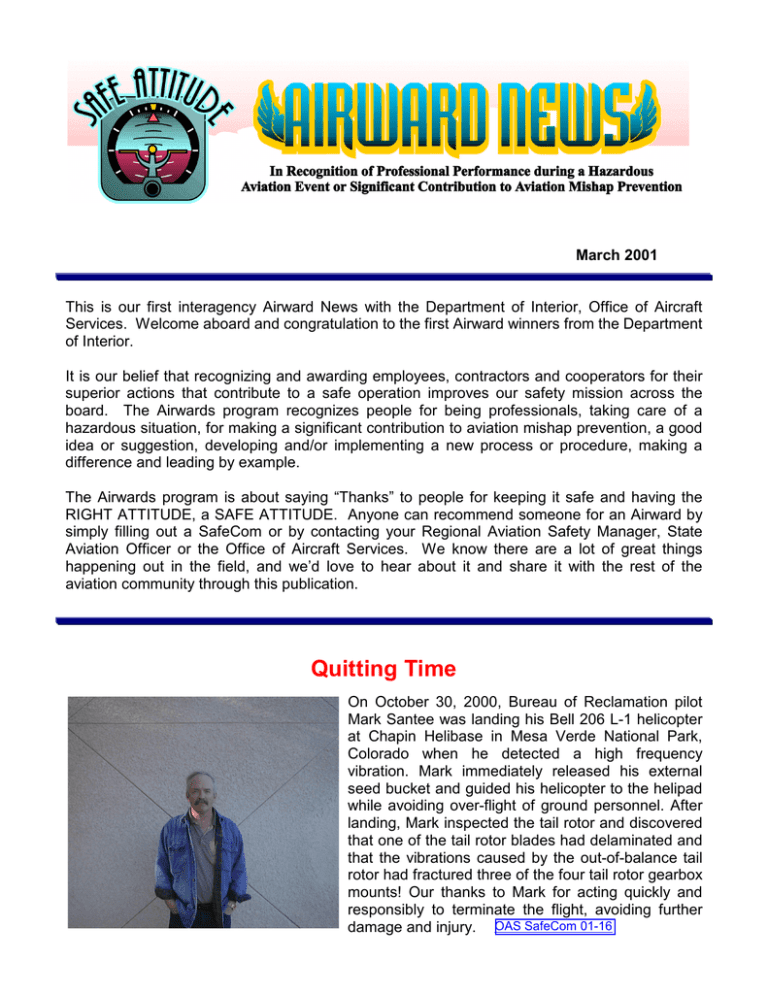
March 2001 This is our first interagency Airward News with the Department of Interior, Office of Aircraft Services. Welcome aboard and congratulation to the first Airward winners from the Department of Interior. It is our belief that recognizing and awarding employees, contractors and cooperators for their superior actions that contribute to a safe operation improves our safety mission across the board. The Airwards program recognizes people for being professionals, taking care of a hazardous situation, for making a significant contribution to aviation mishap prevention, a good idea or suggestion, developing and/or implementing a new process or procedure, making a difference and leading by example. The Airwards program is about saying “Thanks” to people for keeping it safe and having the RIGHT ATTITUDE, a SAFE ATTITUDE. Anyone can recommend someone for an Airward by simply filling out a SafeCom or by contacting your Regional Aviation Safety Manager, State Aviation Officer or the Office of Aircraft Services. We know there are a lot of great things happening out in the field, and we’d love to hear about it and share it with the rest of the aviation community through this publication. Quitting Time On October 30, 2000, Bureau of Reclamation pilot Mark Santee was landing his Bell 206 L-1 helicopter at Chapin Helibase in Mesa Verde National Park, Colorado when he detected a high frequency vibration. Mark immediately released his external seed bucket and guided his helicopter to the helipad while avoiding over-flight of ground personnel. After landing, Mark inspected the tail rotor and discovered that one of the tail rotor blades had delaminated and that the vibrations caused by the out-of-balance tail rotor had fractured three of the four tail rotor gearbox mounts! Our thanks to Mark for acting quickly and responsibly to terminate the flight, avoiding further damage and injury. OAS SafeCom 01-16 Between a Rock and a Hard Spot On August 30, 2000, National Park Service Ranger/Pilot Shad Dusseau departed Kobuk Valley National Park, Alaska, enroute to Kotzebue with three passengers aboard his Cessna 206 floatplane. Fifteen minutes into the flight, Shad, a registered EMT and former military medical corpsman, recognized that he was experiencing a serious medical problem. Rather than continue on to Kotzebue where medical assistance was available, Shad’s concern for the safety of his passengers caused him to immediately terminate the flight despite his medical condition. Shad landed in the nearby Kobuk River where he collapsed shortly after beaching the aircraft. The passengers successfully called for help using the aircraft’s radio, administered first aid, and built a small shelter. Medical help arrived shortly thereafter. Shad was taken to Providence Hospital in Anchorage where he recovered. Congratulations to Shad Dusseau, Park Rangers Dan Stevenson and Linda Jeschke, and Park Management Assistant Patty Christian for a job well done! No SafeCom submitted. Helicopter Manager Strikes Again When the relief pilot showed up in Wiggins, MS to relieve the pilot for the helicopter Kirby Cook from the Beaverhead-Deerlodge NF was managing, the first thing Kirby did was check his card. Immediately red lights were flashing, the pilot was not carded for the mission. The pilot told Kirby that he had been carded in June for aerial plastic sphere dispenser, but it wasn’t on his card. Kirby spent the rest of the morning burning up the phone lines calling various regions, OAS and the company to verify the pilots qualifications. Kirby verified that the pilot was in fact qualified and by noon the helicopter was launched to the burn site to begin firing operations. Checking pilot and aircraft carding is essential to our safety program. This event demonstrates the importance of checking the paper work. Great job Kirby, this Airward’s for you. USFS SafeCom 01-43 Aviation Safety Offices www.aviation.fs.fed.us - www.oas.gov

